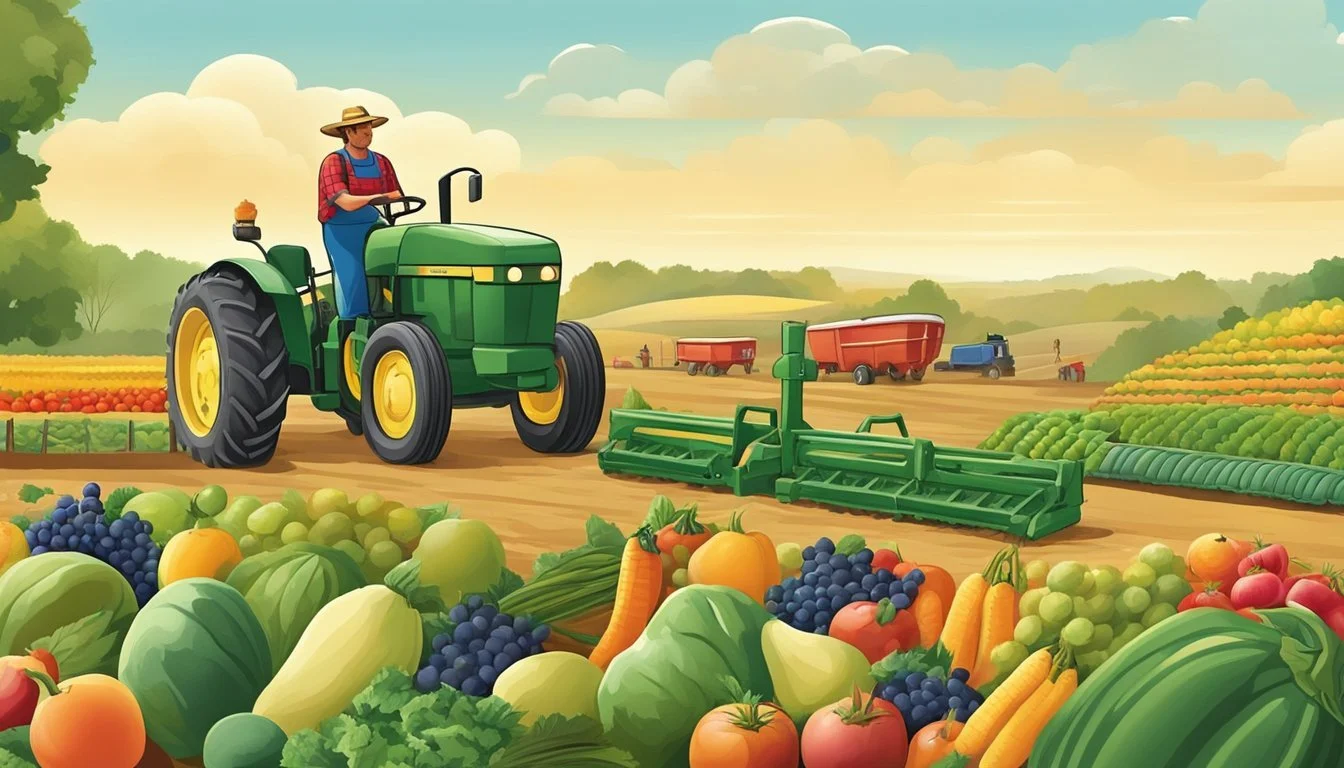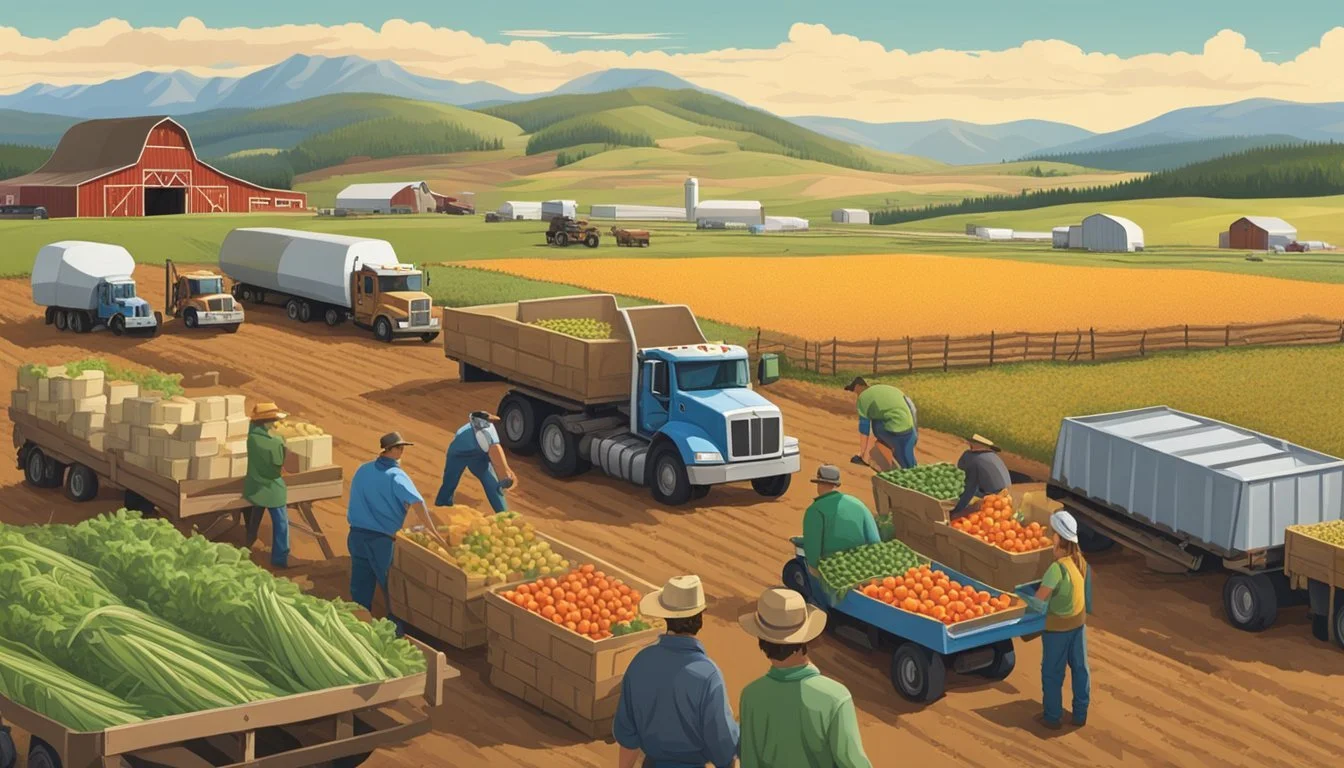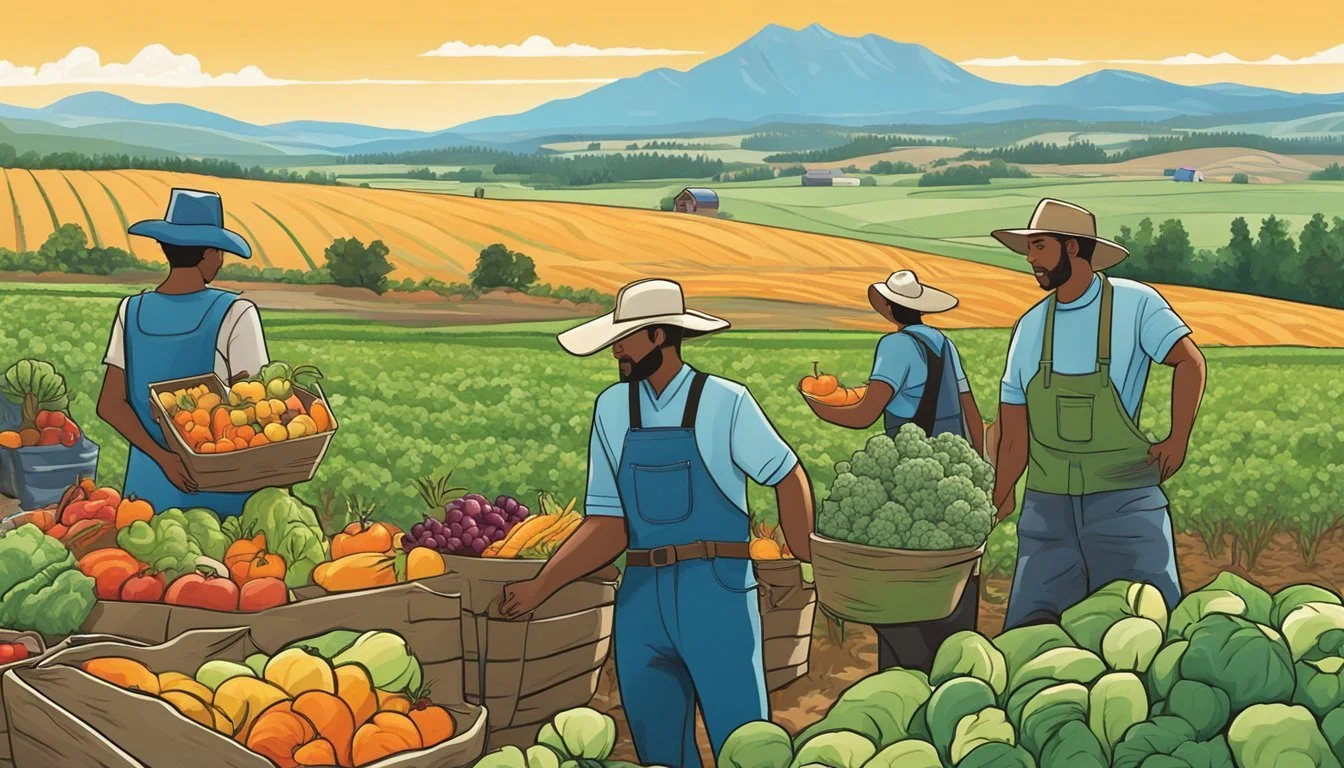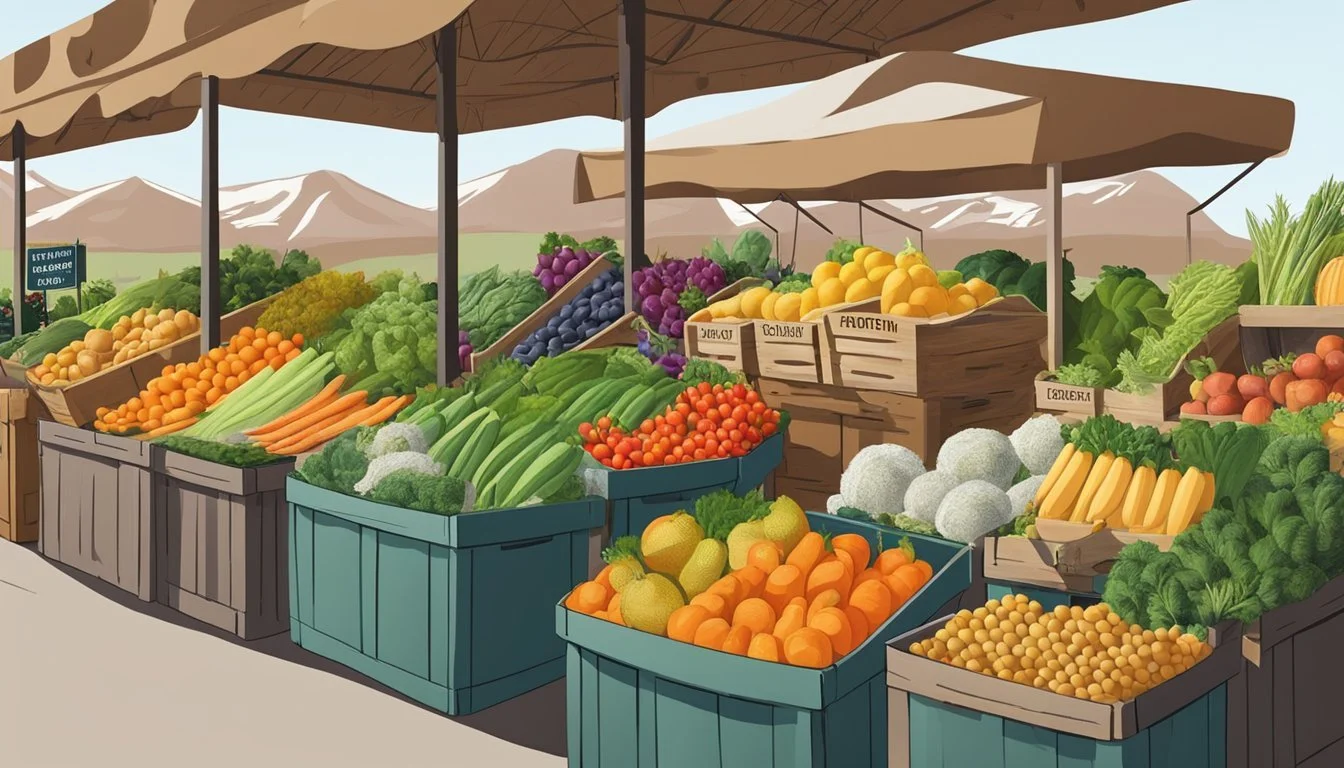Community Supported Agriculture (CSA) in Wyoming
Embracing Local Food Systems
Community Supported Agriculture, commonly known as CSA, represents a farming model that fosters a partnership between farmers and the local community in Wyoming. Within this model, community members provide financial support to local farms at the beginning of the growing season by purchasing shares or memberships. In return, members receive a regular supply of fresh, locally grown produce throughout the farming season. This system offers stability for farmers who can count on upfront capital to cover the initial costs of seeds, equipment, and labor, while members enjoy the benefits of fresh, high-quality food sourced directly from their local farms.
In Wyoming, CSA programs have played a pivotal role in sustaining family-run farms and supporting the local agricultural economy. Farms like Meadow Maid address the mutual benefit of CSAs by ensuring the continuation of traditional farming practices while providing communities with access to nutritious, locally-produced food. With a growing number of farms adopting the CSA model, residents have increasingly turned to this form of agriculture for its economic and environmental advantages. As members form direct relationships with farmers, they not only gain insight into how their food is produced but also contribute to a model that prioritizes environmental stewardship and the well-being of the local community.
History and Concept of CSA
Community Supported Agriculture represents a partnership between local farms and consumers, where upfront investments by consumers support the operations of local farms throughout the growing season. This approach fosters a stable financial environment for farmers and a local, sustainable source of agriculture for the community.
Origins of CSA
The concept of CSA found its American beginnings in the 1980s, with the establishment of Indian Line CSA in Massachusetts and Temple-Wilton Community Farm in New Hampshire, both in 1986. These initiatives were significant in introducing the Community Supported Agriculture model to the United States, although the idea itself had been conceived earlier and elsewhere. Broadly, CSA aims to connect consumers directly with their food producers, facilitating mutual benefits.
CSA Evolution in Wyoming
In Wyoming, Community Supported Agriculture is aligned with the rural nature of the state and its tradition of family farming. The local farm Meadow Maid CSA in particular has embodied this movement, contributing to the economic sustenance and predictability for farmers engaged in traditional farming practices. Various local CSAs offer shares to members who, in turn, receive regular distributions of fresh produce throughout the farming season. The U.S. Department of Agriculture recognizes the value of CSAs and provides support and resources, acknowledging their role in fostering sustainable local food systems.
How CSAs Work
Community Supported Agriculture (CSA) programs in Wyoming connect local farmers directly with consumers. Through subscription-based memberships, shareholders receive fresh, seasonal produce while contributing to the sustainability of local agriculture.
Membership and Subscription
In Wyoming, individuals become members of a CSA by subscribing for a season's worth of produce. Subscriptions are typically offered in advance of the growing season and serve as a commitment between the shareholder and the farmer.
Shares and Produce Types
Members receive a portion of the farm's harvest, known as a "share." A typical share includes a variety of vegetables and fruits. The assortment of produce a member receives will depend on what the local farmers are growing that season.
Payment Structures
The payment structure of CSA subscriptions in Wyoming can vary. Often, consumers may choose a full payment upfront or a payment plan that divides the total cost into several installments. This provides predictability of income for farmers and acts as capital to cover the production costs.
Seasonality and Weather Implications
The shares are heavily influenced by seasonal factors and local weather conditions. As such, CSA members share the risks of the growing season with the farmer, which can include unpredictable weather impacting the variety and quantity of produce available.
Benefits of Joining a CSA
Joining a Community Supported Agriculture (CSA) program offers tangible benefits for both consumers and farmers in Wyoming. These advantages play a crucial role in strengthening local food systems and promoting sustainable agricultural practices.
Advantages for Consumers
Variety and Freshness: Consumers participating in CSA programs enjoy a diversified diet with an array of farm products such as fresh vegetables, fruits, eggs, cheese, and sometimes meat. The produce is fresher than what is typically found in grocery stores, as it is grown locally and often harvested within hours of delivery.
Local Food Systems: Participation in CSAs supports local food systems, strengthening community ties and ensuring that money spent on produce goes directly to local farmers, which can help reduce greenhouse gas emissions associated with long-distance transportation.
Sustainable Choices: CSA members contribute to sustainable food systems by enabling farmers to practice eco-friendly methods that may include reduced use of pesticides and better soil management, leading to a smaller carbon footprint compared to industrial-scale agriculture.
Advantages for Farmers
Direct Market Access: Farmers benefit from a guaranteed market for a significant portion of their harvest, which can reduce marketing costs and financial risk. This model allows them to plan for the season, knowing they have a steady consumer base.
Community Engagement: CSAs allow farmers to establish a direct connection with their community, fostering relationships and providing opportunities for consumer education on agricultural practices and food production.
Stable Income: Advance payments from CSA members can contribute to a farmer’s financial stability, enabling them to manage cash flow and invest in farm operations at the start of the growing season, when it is most needed.
Operational Challenges for CSAs
While Community Supported Agriculture (CSA) offers a sustainable alternative to traditional food systems, it faces unique operational challenges in Wyoming's dynamic market and climate.
Market Competition
CSAs often compete with local farmers markets and grocery stores for consumer attention and dollars. Local farms may struggle to differentiate their products in a crowded marketplace and must communicate the value of supporting CSAs directly to consumers. Effective messaging that emphasizes the benefits of fresh, locally-sourced produce is key to standing out in this competitive environment.
Distribution Logistics
Efficient distribution remains a critical concern for CSAs. The logistical challenges include establishing delivery systems that can handle the operational demands of packaging and transport while maintaining the integrity of the produce. CSAs need to prioritize robust distribution networks to ensure that fresh goods reach consumers promptly and in good condition.
Weather and Crop Risks
CSAs in Wyoming must deal with unpredictable weather patterns that can have adverse effects on crop yields. The risk of hail, drought, or other environmental factors puts pressure on local farms to adopt resilient agricultural practices. Risk management strategies, such as crop diversification and investing in protective infrastructure, are vital for mitigating these threats and securing steady operations.
Selecting a CSA in Wyoming
When choosing a CSA in Wyoming, one should approach the selection process with careful consideration of their community and personal needs. Evaluating local CSA options involves understanding what is offered, how the farm operates, and the overall benefits to the local community and environment.
Research Tips
Start with LocalHarvest: Utilize LocalHarvest, an online directory, which provides listings for CSAs in Wyoming. It is a valuable resource to find and compare nearby CSA options.
Check CSA Directories: The University of Wyoming and other agricultural organizations often maintain directories of local CSAs. These resources consolidate information about CSA offerings and operational details.
Questions to Ask Farmers
Share Details: Inquire about what is included in a share, how it is distributed, and the length of the CSA season. This aids in gauging whether the share will meet personal or family needs.
Farming Practices: Ask about the sustainable practices and farming methods used. This ensures one supports farms that align with their environmental and health values.
Visiting Farms
Scheduling Visits: Make appointments to visit the farms, as they can provide valuable insights into the farming operations and product quality.
Observation: During the visit, observe the farm's cleanliness, organization, and the health of the crops and animals, which can be indicative of the quality and care put into the CSA products.
By following these specific approaches to selecting a CSA in Wyoming, individuals can make informed decisions that benefit themselves and support their local farming community.
The Role of CSA in Wyoming's Community
Community Supported Agriculture (CSA) plays a significant role in sustaining the agrarian lifestyle and economy of Wyoming. It does so by directly linking local farms to community members who receive fresh produce while supporting local farmers financially and socially.
Strengthening Local Economies
CSA programs in Wyoming provide a steady revenue stream for local farmers. This economic model allows consumers to pay in advance for a share of the season’s harvest, thereby giving farmers the necessary funds to plan and manage their operations effectively. For instance, Meadow Maid CSA, operated by the Ridenour family, embodies the symbiosis between Wyoming farmers and their customers, ensuring the longevity of traditional family farming practices.
Direct impact: Paid upfront, CSA memberships inject early-season capital into the farming operations.
Market stability: CSAs give farmers a guaranteed market for their products, reducing the marketing risks associated with crop production.
Building Community Relationships
Community relationships thrive around CSA programs. By participating in CSAs like Fresh Foods Wyoming’s Veggie Box Program, the members become stakeholders in the farm's yearly output, fostering a sense of community involvement and shared responsibility. This mutual commitment between farms and members forges stronger ties within communities, as they work together to strengthen local food systems.
Mutual Support: CSA members and farms enter into partnership, enhancing community support for local agriculture.
Local Engagement: CSA programs encourage regular interaction between producers and consumers, promoting a close-knit community ethos.
Educational Opportunities
Educational opportunities abound in CSA settings, where members gain insight into how food is grown and harvested. Programs in Wyoming often include farm visits and newsletters, which can educate members about sustainable farming practices and the challenges of agriculture.
Knowledge Sharing: Farms like Shared Legacy Farms provide avenues for knowledge exchange through their CSA model.
Awareness and Appreciation: Exposure to farming methods can lead to a greater appreciation of the labor and processes involved in local food production.
Through structured interactions like farm events and distributions, CSA members develop a more intimate understanding of their local food systems, strengthening the farm-community relationship and contributing to the preservation of Wyoming's agricultural heritage.
Preparing and Preserving CSA Produce
When individuals become members of a Community Supported Agriculture (CSA) program in Wyoming, they are often provided with an abundance of seasonal vegetables. Proper preparation and preservation techniques are crucial to maximize the use of this produce.
Cooking with Seasonal Vegetables
Seasonal Cooking Basics:
Inventory Management: Upon receiving their CSA share, members should inventory their fresh vegetables. This helps in planning meals around the produce that is most perishable.
Recipe Flexibility: Cooking with seasonal vegetables requires flexibility in recipes. Members should be prepared to substitute ingredients based on what is available in their CSA share.
Examples of Seasonal Vegetables in Wyoming CSA and Cooking Techniques:
Spring: Tender greens such as spinach and arugula are excellent for salads and quick sautés.
Summer: Zucchini and bell peppers are ideal for grilling or incorporating into summer stews.
Fall: Root vegetables like beets and carrots can be roasted to enhance their sweetness.
Freezing and Canning
Freezing Vegetables:
Blanching: Many vegetables should be blanched before freezing to preserve color, texture, and flavor. This involves boiling them briefly and then plunging them into ice water.
Storage: Vegetables should be packed in airtight containers or freezer bags with excess air removed.
Vegetable Blanching Time Broccoli 3 minutes Carrots 2 minutes Peas 1.5 minutes
Safety First: Only use tested recipes from reliable sources as incorrect canning can lead to foodborne illness.
Acidity Consideration: Vegetables, being low-acid foods, require pressure canning to ensure safety.
Steps for Canning Vegetables in a CSA Share:
Clean and prepare vegetables.
Fill jars as directed by a tested canning recipe.
Use a pressure canner to process the jars.
With these approaches, CSA members can savor the bounty of their local Wyoming farms throughout the year.
Exploring Alternatives to CSAs
While Community Supported Agriculture (CSA) fosters direct partnerships between farmers and consumers, it's beneficial to consider other methods of accessing local produce. These alternatives can also support the community economy and offer competitive prices.
Farmers Markets
Farmers markets represent a vibrant interface between rural producers and urban consumers. Here, visitors can purchase fresh produce, meat, and artisanal goods directly from local farmers. Prices at farmers markets tend to be competitive, reflecting both the quality of the products and the absence of middlemen. In Wyoming, these markets not only provide a venue for economic exchange but also serve as a community hub, enhancing the connection between the town's residents and its food providers.
Proximity: Farmers markets often offer a broader range of choices from various local farms compared to a single CSA.
Flexibility: Consumers are not bound by subscription models and can purchase based on their current needs.
Local Grocery Options
Local grocery stores in Wyoming may stock locally-sourced produce as a means to support community farmers and artisans. The prices can be higher than those found at farmers markets or CSAs due to the added operational costs of the stores. However, these local grocery options often provide year-round access to local goods alongside conventional products, thus maintaining a balance between supporting the local food system and convenience.
Availability: Local groceries typically offer a consistent supply of local produce regardless of the season.
Convenience: Situated within community centers, they provide easy access for daily shopping needs.
By considering these alternatives to CSA, residents can support their local economy, gain access to fresh local produce, and potentially save money while still upholding the principles of community-focused agriculture.
Future of CSA in Wyoming
The trajectory of Community Supported Agriculture (CSA) in Wyoming points towards enhanced innovation and stronger policy support. As local farms continue to navigate evolving market demands and climate realities, CSA’s relationship with both technology and governance will be pivotal.
Innovation and Adaptation
Wyoming's CSAs are leveraging technological advancements and creative marketing strategies to secure their future. They are evolving through:
Diversification of crops to meet consumer demands and mitigate risks.
Implementing precision agriculture techniques to optimize resources and yields.
Utilization of online platforms for better marketing outreach and member management.
These adaptations aim at not only sustaining but also scaling up local farms' operations while maintaining a personal relationship with the community.
Policy and Support Measures
The support measures for CSA in Wyoming are focused on creating a sustainable environment for local farms. Key initiatives include:
Government grants and subsidies that support sustainable agriculture practices.
Education programs to foster consumer understanding of CSA benefits.
Collaborative networks among CSAs for shared learning and resources.
Policymakers recognize that fostering a robust CSA system strengthens the local farm economy and promotes food security within the community.
Conclusion
In Wyoming, Community Supported Agriculture (CSA) has established itself as a valuable component of the local food system. It strengthens the bond between the community and local farms through a subscription-based partnership. Consumers gain access to fresh, seasonal vegetables, while farmers benefit from economic support and predictability.
Advantages of CSA in Wyoming include:
Enhanced farm stability: Prepaid subscriptions provide farmers with a reliable income source.
Community engagement: CSAs encourage direct communication between consumers and their local farmers, fostering a sense of community.
Nutritional benefits: Consumers enjoy a diverse range of fresh, nutrient-rich produce.
Despite representing a small fraction of farms in Wyoming, CSA models are a testament to the community's commitment to supporting sustainable and traditional family farming practices. In contrast with farmers' markets, CSAs embody a more intimate understanding and obligation by involving community members directly in the food production process.
Future Prospects:
Potential for growth in consumer participation.
Opportunity for further diversification of crops offered within CSAs.
Increased awareness can contribute to more robust local economies and food sovereignty.
Community Supported Agriculture showcases a mutual dedication to environmentally conscious agriculture and community resilience in Wyoming. The CSA model encapsulates not just a farming system, but also a philosophy of interdependence and collaboration between local farmers and their communities.











